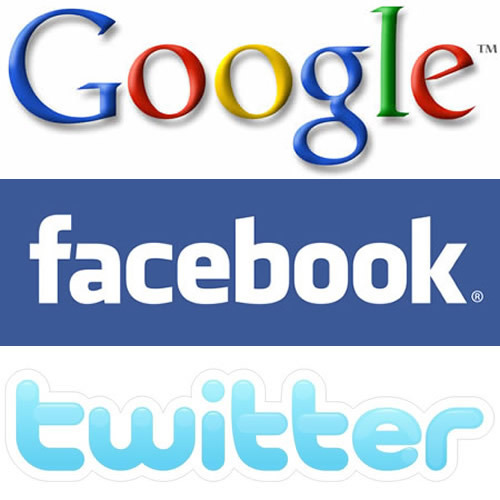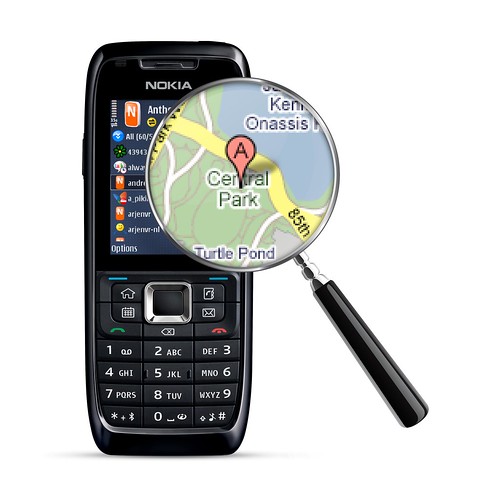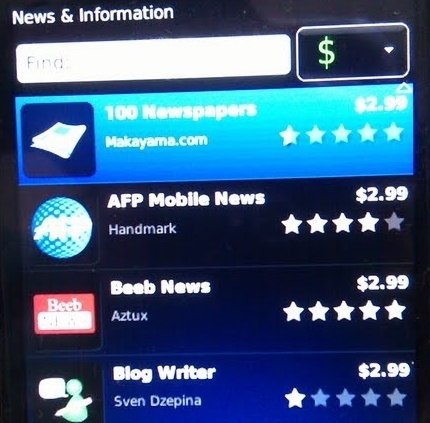There are now over 5 billion mobile subscriptions around the world. Smartphone ownership is steadily growing, both in the United States and abroad. Smartphone ownership is projected to be above 50% of all mobile phones in the United States by next year. This has many NGOs and other content and media prodicers wondering about how best to produce content for mobile phones (high-end devices, in particular). SMS and voice-based applications have their use cases, but many content producers today are wondering whether to produce a mobile website or a mobile application (app) to distribute their content. [Note: In fact, in much of the developing world, SMS and voice are still the killer applications. But increasingly in the developing world, and already in much of the developed world, there is a debate about whether to produce mobile web content or content on mobile apps. This article addresses that specific debate].
This article provides an overview for anyone producing content about these two options. We argue that most content producers should focus on the mobile web, especially if they want to make their content more widely accessible. Mobile apps may be appropriate if looking for new sources of revenue, or deep user engagement, but many other factors make the mobile web the more sensible platform for most content producers.
I'll provide a detailed comparison of both mobile web and apps for the dissemination of content focusing on the following: making content accessible, dealing with a multitude of devices and platforms, cost of production, control over what content can be published, leveraging social networks and search engines, features (such as ability to access users' location), user engagement, and monetization.
The Argument for the Mobile Web
One of the main reasons content producers want to distribute their content on mobile phones is to increase the size of their audiences. Today's audiences consume content on their phones, and distributing content on mobiles is a way of letting an audience consume your content. If that is the primary motivation, content producers should focus on the mobile web over apps, without question. There are many other reasons why targeting the mobile web may prove more helpful to content producers, which include:
- More phones have the ability to access web-based content than specific app-based content.
- Content on the mobile web can be served easily to many different types of mobile handsets.
- Cost of production is lower for mobile web content.
- You are free to publish anything on the web, whereas application distribution platforms sometimes tightly control what can be distributed, based on content in the app or a set of other criteria.
- Content published on the mobile web is automatically accessible through search engines and social networks, two primary ways people find content today.
- Many must-have features for mobile content distribution (location, multimedia support, offline storage) are available through new standards like HTML5, supported on many different high-end devices.
That said, there are reasons to look at mobile apps over mobile websites. Some of these reasons include:
- Mobile apps make it easier to monetize content by charging for content both easier and more culturally acceptable.
- Despite HTML5's support of many important features, some features (like hardware support) will only be available to native apps.
- Mobile apps have a better case of high user engagement, at least according to one case study of a United States-based content producer.
Let's delve a little deeper these issues.
The Face-off: Mobile Web vs. Mobile Apps
In this section, we'll define what we mean by the mobile web and by mobile application. We'll compare the mobile web and mobile apps and compare them along the following categories: making content more widely accessible, dealing with a multitude of devices and platforms, cost of production, control over what content to publish, leveraging social networks and search engines, features (such as the ability to access users' location), engaging users, and monetizing content.
Definitions: Mobile Web and Mobile Apps
"The mobile web" is a confusing term. In this article, a "mobile website" will simply refer to a website that is accessible on most mobile phones ("the mobile web" is a collection of all such websties). This is web content written in HTML/XHTML 1.0 and caters to the restrictions of mobile phones: smaller screens than traditional desktops and laptops, more difficult text input, and low processing power and bandwidth. But it also includes new content written in HTML5, that has more features, but is only supported on browsers of iPhone, Android, and Palm OS devices.
A mobile application is an application runs natively on a mobile phone. This includes applications that run on smartphone platforms like the iPhone, BlackBerry, Android, Symbian, or other platforms like J2ME or BREW. J2ME applications run on many particular devices at once (see "Dealing with Different Devices and Platforms" below for a deeper discussion of this), while applications for other platforms only run on that platform.
Making Content More Widely Accessible
 One of the main reasons content producers should produce content for mobile phones is to make that content widely accessible. People the world over are increasingly consuming content on mobile phones. Soon, not allowing mobile users to access your content will be akin to not having a website - some people won't be able to find you at all.
One of the main reasons content producers should produce content for mobile phones is to make that content widely accessible. People the world over are increasingly consuming content on mobile phones. Soon, not allowing mobile users to access your content will be akin to not having a website - some people won't be able to find you at all.
To provide access to content, it is much better to produce mobile websites rather than apps. Take the United States as an example as decent ownership and usage data is available for this region. Comscore's May 2010 report shows that the percentage of U.S. mobile owners who use their browsers and downloaded apps is similar (30% vs. 32%). So a basic mobile website will be accessible to 32% of United States mobile users. But a mobile app for a specific platform will be accessible to much less than 30% of the mobile population. The largest smartphone platform, RIM OS, constitutes 41% of the smartphone market, or 9% of all mobile phones. So an application produced for RIM OS will be accessible to 9% of the U.S. mobile owners, an iPhone app to 5%, and an Android app to 3% of U.S. mobile subscribers. It is not hard to see that an individual app, in terms of increasing access, loses out hugely to the mobile web.
Elsewhere around the world, the story is similar in that in many countries smartphone apps reach only a tiny percentage of the population. Only around 15% of mobile phones around the world are smartphones, with Nokia and RIM owning most of the marketshare. (Because both those smartphones run Java (J2ME) apps well, Java apps are a contention against the mobile web for making content widely accessible on the global stage. However, as we discuss in the next section, the wide applicability of Java apps is somewhat a false notion, which is why Java apps don't "win" this category).
Winner: The mobile web. If you want to enable widespread mobile access of your content, make a mobile website.
Dealing with Multiple Devices and Platforms
 An unfortunate reality of producing content for mobile phones is that there is a bewildering variety of devices and platforms that one needs to produce content for. In the personal computer world, anything written for the web is accessible on nearly all platforms. Most programming languages and libraries offer support for multiple operating systems. With mobiles, the world looks different.
An unfortunate reality of producing content for mobile phones is that there is a bewildering variety of devices and platforms that one needs to produce content for. In the personal computer world, anything written for the web is accessible on nearly all platforms. Most programming languages and libraries offer support for multiple operating systems. With mobiles, the world looks different.
Apps, by design, have to be built for a specific platform. One has to develop a different application for each operating system and the operating system-specific SDK (Software Development Kit). Separate applications have to be written for the iPhone, Android, BlackBerry, Symbian, Palm OS, and other platforms. While platforms like Java ME promised a 'write-once-run-everywhere' paradigm, they did not quite deliver this reality. Java ME support is notoriously inconsistent on different types of phones. One of the most used Java applications MXit boasts it has been tested individually on 1940 different handsets, and mobile game developing firm ZMQ told this author that after years of software development, they still expect most of their games to run on about 65% of handsets in the wild. This is hardly a 'write-once-run-everywhere' platform.
Hybrid platforms like PhoneGap, Titanium, and others have tried to enable developers to write content for multiple smartphones recently, but their usefulness is in a dubious state after the iPhone developer license introduced a clause forbidding development using third-party languages (most of the platforms are most robust for iPhone app development).
The mobile web is a more standardized technology, despite its own hitches. The oldest phones supporting the mobile web only support WML (Wireless Markup Language) served over WAP (Wireless Application Protocol). Fortunately, most of today's phones support basic HTML/XHTML. The inconsistency that mobile web designers have to design for is different screen sizes, which do end up matter because all mobile screen sizes are small to begin with. In addition, the new and feature-rich HTML5 is only supported on a few phones. But HTML5 support on newer mobile phones is growing, and techniques like user-agent detection makes whatever inconsistencies handsets may have easier to deal with.
Winner: The mobile web. The mobile web allows you to produce content accessible on almost every phone, and content with advanced features that are accessible on an increasing number of devices.
Cost of Production
 One obvious factor to consider when producing new types of content is the cost.
One obvious factor to consider when producing new types of content is the cost.
The general consensus is that mobile web content is much cheaper to produce than mobile apps on any particular platform. When considering multiple platforms, the mobile web is the clear winner (a Google VP said in June 2009 that "even Google" isn't rich enough to create apps for every smartphone platform). The entry point technologies for both the mobile web and apps are quite cheap: Wordpress.com, Wordpress.org plug-ins, and Mobify allow even non-technical audiences to build mobile websites for free; Mobile Roadie, AppMakr, and similar technologies allow non-technical audiences to build apps for costs of around $100.
For more complicated sites and apps, the main cost is development time. One advantage mobile websites do have is that they are developed using the same languages and technologies used for the desktop web (ie, HTML/CSS/Javascript). For organizations with an established web team, this can be a huge help. Mobile apps will require developers familiar with particular application frameworks. To make aps for multiple platforms, development costs will undoubtedly grow, as much of the development done for one platform cannot be repurposed.
Winner: The mobile web. Mobile websites seem to be cheaper to produce than individual smartphone apps. When you consider multiple platforms, mobile websites win big.
Controlling What Content to Publish
 Another thing to consider when producing content is what kinds of content you are allowed to produced on a given platform.
Another thing to consider when producing content is what kinds of content you are allowed to produced on a given platform.
Mobile apps are distributed over highly-gated channels, which sometimes restrict certain types of content. Apple's App Store, in particular, has drawn criticism for having deeply flawed content revision policies. The policies have gained notoriety due to multiple events, including one when the store rejected a set of cartoons by Pulitzer prize-winning cartoonist Mark Fiore. Although in less notorious ways, other application stores (see BlackBerry App World policies, Android Market Policies). The web (or the mobile web), on the other hand, faces only legal restrictions about what content can be published on it (through the DMCA, for example).
Winner: The mobile web. Application stores can control what applications are distributed, while the mobile web is only subject to governmental regulation.
Leveraging Social Networks and Search Engines
 Another factor to think about when producing mobile content is how the content will be found. The technologies for distributing content on the desktop web - search engines and social networks - are important on mobile phones as well. In fact, 10% of Google searches come from mobile phones, while 37% of Twitter users and 30% of Facebook users use their mobile phones to access these services.
Another factor to think about when producing mobile content is how the content will be found. The technologies for distributing content on the desktop web - search engines and social networks - are important on mobile phones as well. In fact, 10% of Google searches come from mobile phones, while 37% of Twitter users and 30% of Facebook users use their mobile phones to access these services.
It is important to consider how your content can be found by mobile users on these platforms. Peter Kirwan's idea of the "tweet-led link economy" emphasizes that a lot of content today is spread through links on social networks, and search engines continue to be the biggest referrers to most sites. Both technologies spread information using links. Mobile websites have an automatic advantage here: when a user clicks on a link, they are led to the mobile website and not to the app (except in select cases).
Winner: The mobile web. Social networks and search engines distribute information using links; mobile websites leverage this infrastructure.
Features (Accessing Users' Location, etc.)
 One thing about mobile content that gets many content producers excited is the ability to select content based on location. Other features like offline access to content, easy loading of multimedia content, and access to hardware devices (like the camera) are also important.
One thing about mobile content that gets many content producers excited is the ability to select content based on location. Other features like offline access to content, easy loading of multimedia content, and access to hardware devices (like the camera) are also important.
For such features, the best support is provided in native apps. The software development kits for each platform exposes all the features of the phone that can be used by third-party software. However, the features most relevant to content delivery are now being made available on the web through HTML5. Geolocation suppport, offline content access, phone orientation detection and support for multimedia is all included in HTML5. HTML5 is becoming fully featured enough so that many app-based content is now delivered over websites rather than apps (one example is YouTube's recent switch). One should also note that mobile websites can leverage features that mobile browsers have already built. As Fred Wilson describes eloquently, mobile apps don't always allow cut-and-paste, tabbed browsing, and don't provide a consistent interface the web has taught users to expect.
Winner ? It's a Tie: Mobile apps and HTML5-based websites. Apps allow the best access to features on most mobile handsets. However, HTML5 lets mobile web developers access many of the most relevant features of mobile phones, and also let them leverage features mobile browsers have already built.
Engaging Users
 Many bloggers and commentators have responded to the rise of mobile phones with the call to build apps, some citing studies like this that express user preference for apps (particularly on the iPhone). However, this preference is under contention, especially as companies like Google push boundaries by making the websites that perform better than apps. And there is another contention: users don't use most apps they download for a long time: after 10 days, only 10% of paid applications and less than 10% of free ones are still used.
Many bloggers and commentators have responded to the rise of mobile phones with the call to build apps, some citing studies like this that express user preference for apps (particularly on the iPhone). However, this preference is under contention, especially as companies like Google push boundaries by making the websites that perform better than apps. And there is another contention: users don't use most apps they download for a long time: after 10 days, only 10% of paid applications and less than 10% of free ones are still used.
There are exceptions: National Public Radio's experience in the United States leads us to believe that apps may still provide better user engagement for certain types of content. NPR has a mobile website and iPhones and Android apps for content delivery, and in their experience, the apps are used more than the corresponding mobile website. While the number of people using the iPhone app and the website are similar, app users view six times as many pages of content, and are engaged with content for longer time periods. The fact that Android and iPhones are disproportionate traffic sources compared to market share alludes to this deeper engagement as well.
Winner: The mobile app. With the caveat that this applies only for apps that users actually keep using on their phones, apps seem to offer deeper user engagement.
Monetizing Content
 Finally, there is the issue of making money-which content producers worry about a lot in this media climate.
Finally, there is the issue of making money-which content producers worry about a lot in this media climate.
Charging users money is possible on both the mobile web and apps, but there are two things that tip the scale towards apps: ease of use and culture of payment on apps.
On the web, users can be charged through web services like PayPal or Amazon payments, or by having users submit their credit card information. On apps, billing integration makes this process far simpler. Most app stores have streamlined processes for users to buy apps; Apple's platform even allows in-app purchases (leading to monetization experiments like McSweeney's). Additionally, many argue that the culture of apps centers around small payments, especially on the iPhone, whereas the culture of the web is focused on lots of free content.
As a result, for making money (especially by having users pay small fees), apps are the better choice. (Two notes here: app stores charge 30-50% as commission on all fees paid. This fee is waived for non-profits on some platforms but not on the Apple app store).
Winner: The mobile app. The culture and ease of payments over apps make them better for monetization experiments than mobile websites.
Similar Articles, Elsewhere on the Web:
Duda Mobile. "Mobile Web vs. Mobile Apps" September 2009
Tech Republic. "Apps are Hot, but Don't Forget the Mobile Web" March 2010
WAP Review. "Mobile 2.0: Apps vs. Browser Based Services" October 2009
Jason Grigsby, Slideshare. "Native vs. Web vs. Hyrbid: Mobile Development Choices" 2009 Mobile Tech
"Mobile Apps Web vs. Native Apps Revisited" April 2010
Robin Wauters. "FT Bypasses Apple’s iTunes, Launches HTML5 Web App (Free Access First Week)" June 2011 Tech Crunch
Image Credits: Anne-Ryan Heatwole, Flickr Users NimBuzz, James Cridland, Cocoarmani, davepatten.

false choice
I'm not sure how useful it is to decide definitively that "mobile web (and not apps) are the right choice", particularly when you yourself note that "apps seem to offer deeper user engagement". Does this mean web is the right choice unless the content provider is interested in deeply engaging the user (as I imagine most are)?
It's particularly unfortunate to paint this in black and white terms when it seems very clear that for many purposes people prefer well-designed mobile apps: do you know anyone with an iPhone or Droid that uses the web when there is an app alternative? Me, neither (I guess they don't know that apps are the "wrong" choice).
Finally, for a lot of the content on the internet we have things like RSS that allow content to be viewed using full-on websites, browser based readers (like Google Reader), and mobile apps. For content like this, the content provider doesn't really have to worry about (or dictate) how the user is getting the content. They just have to think about providing good content. The user can decide on the delivery system that suits them best.
Post new comment